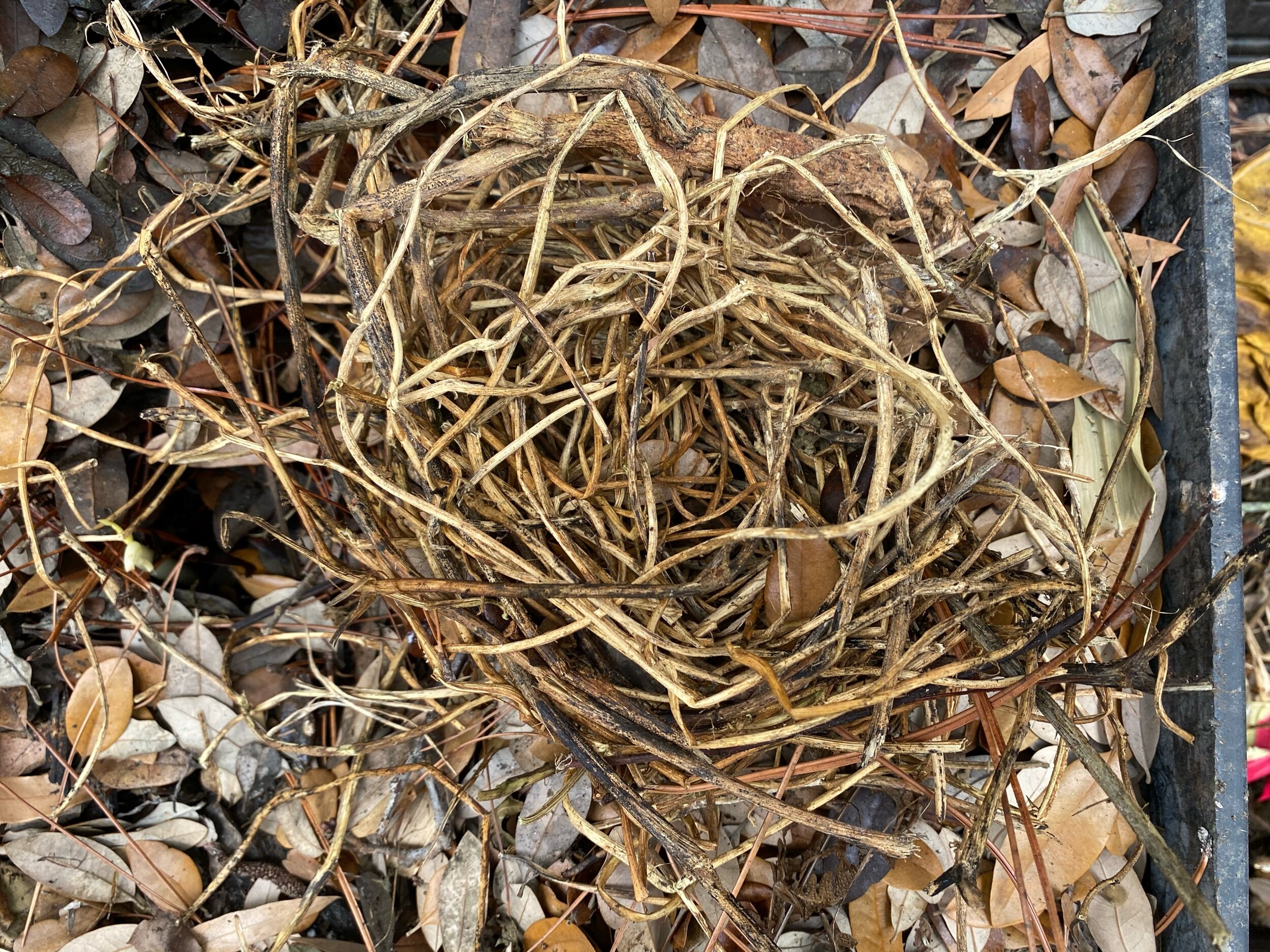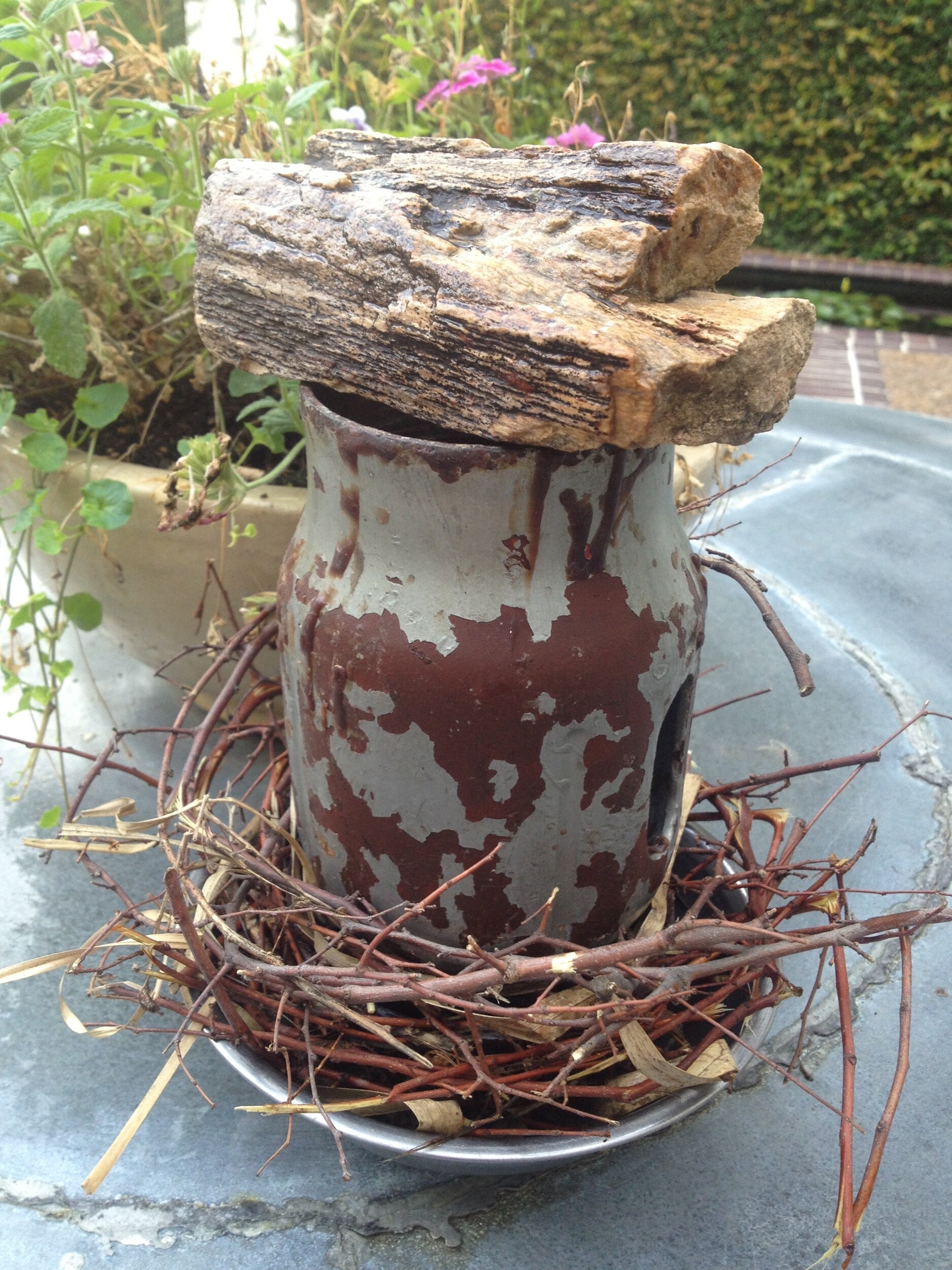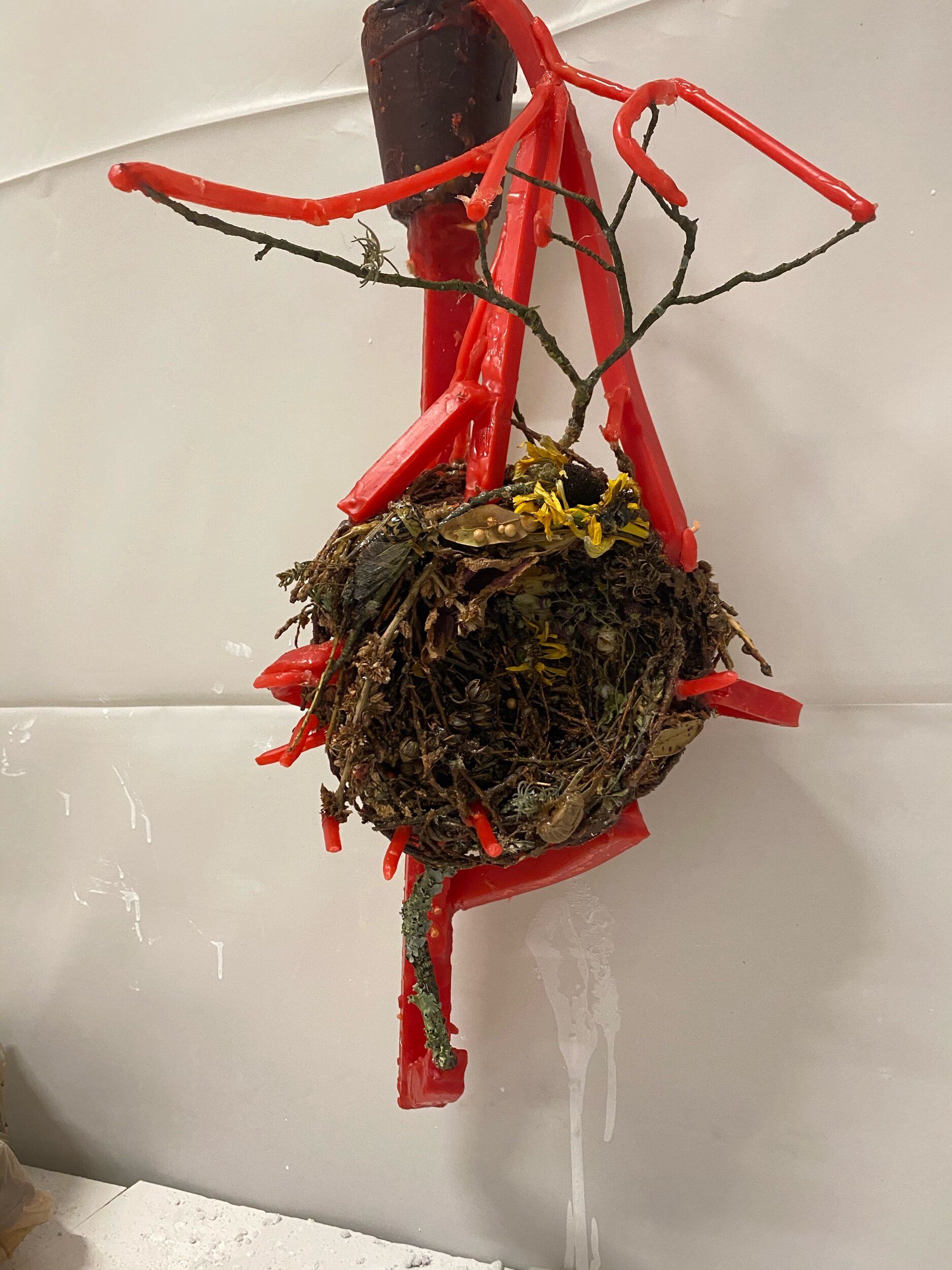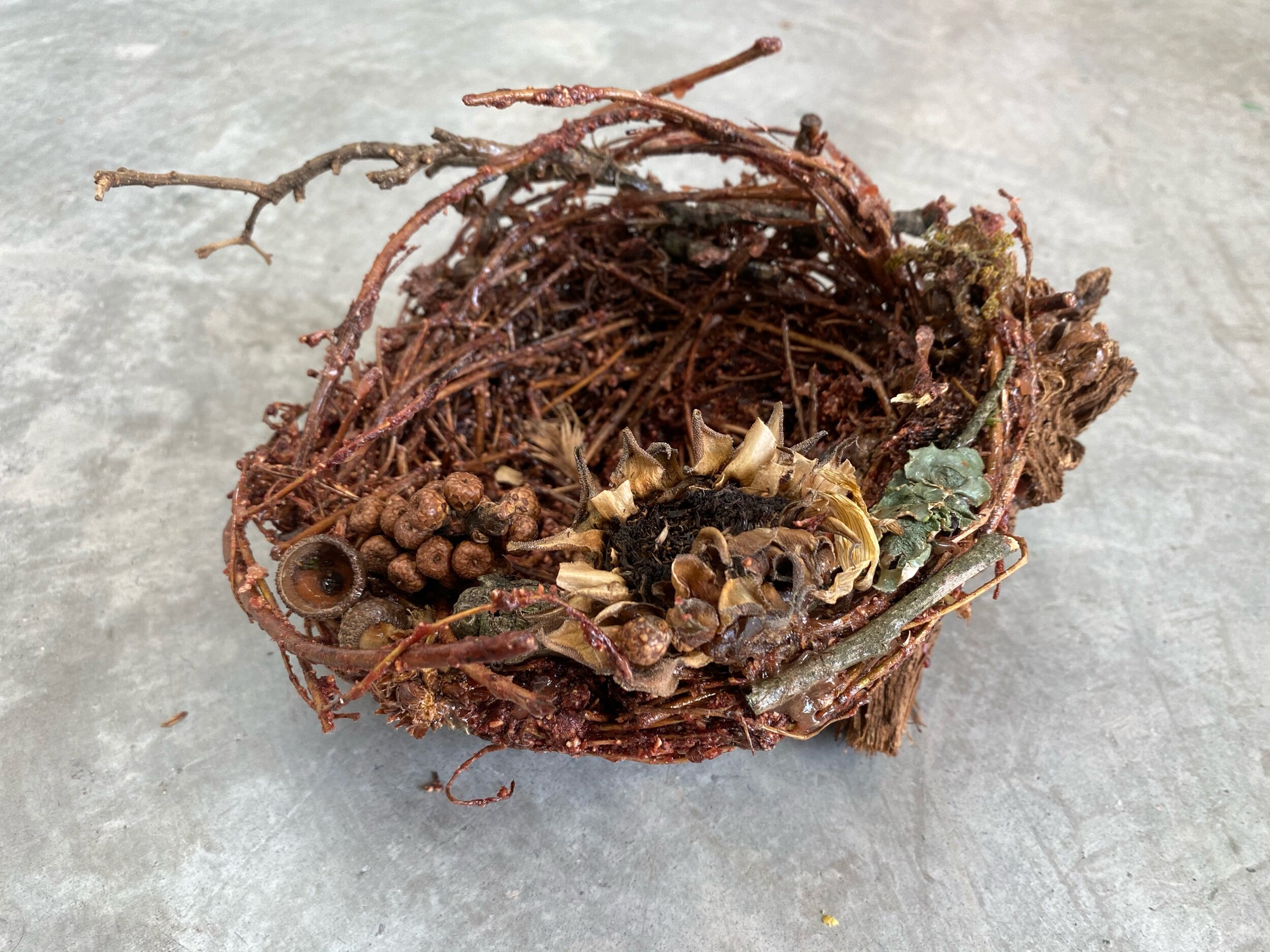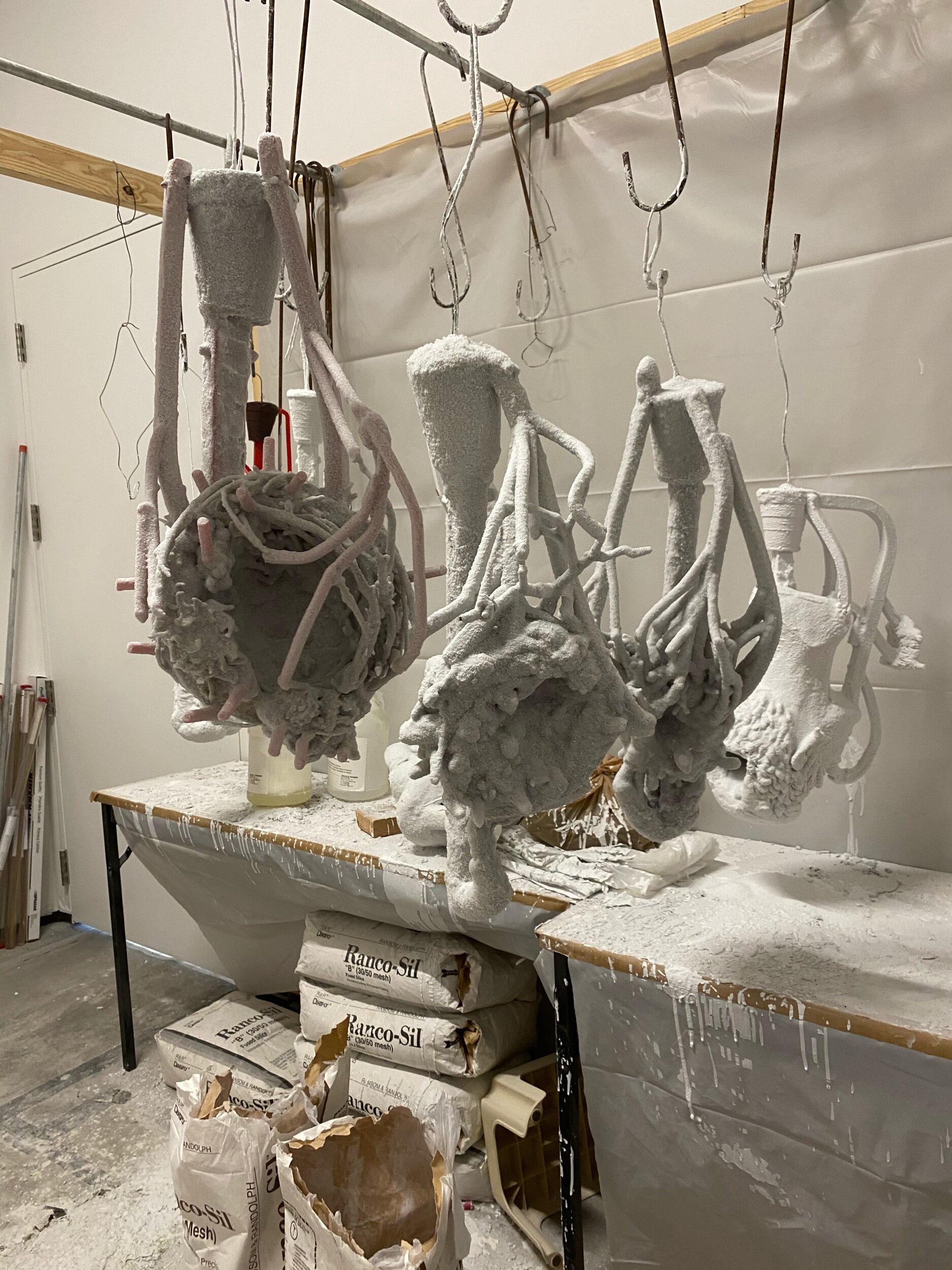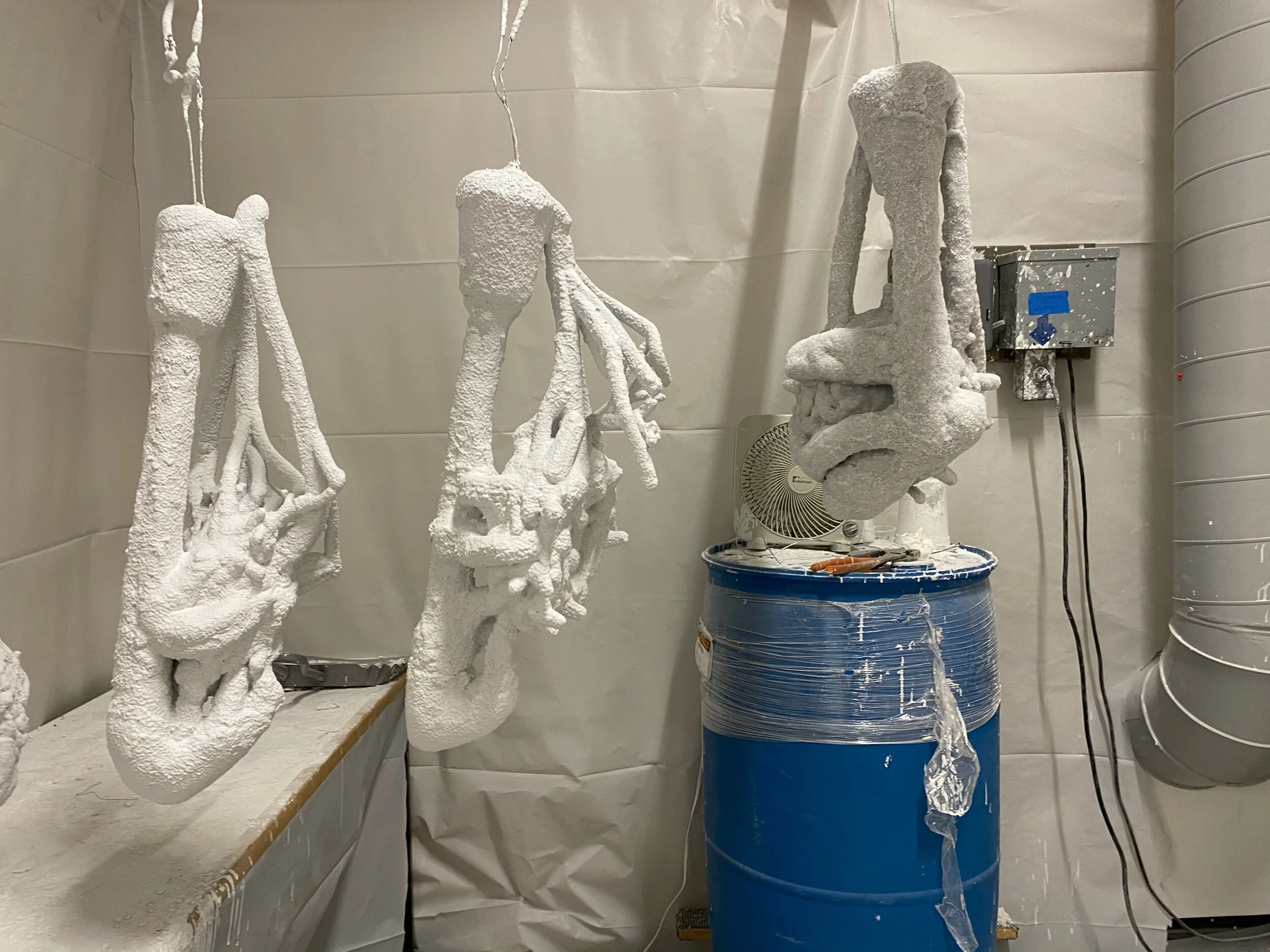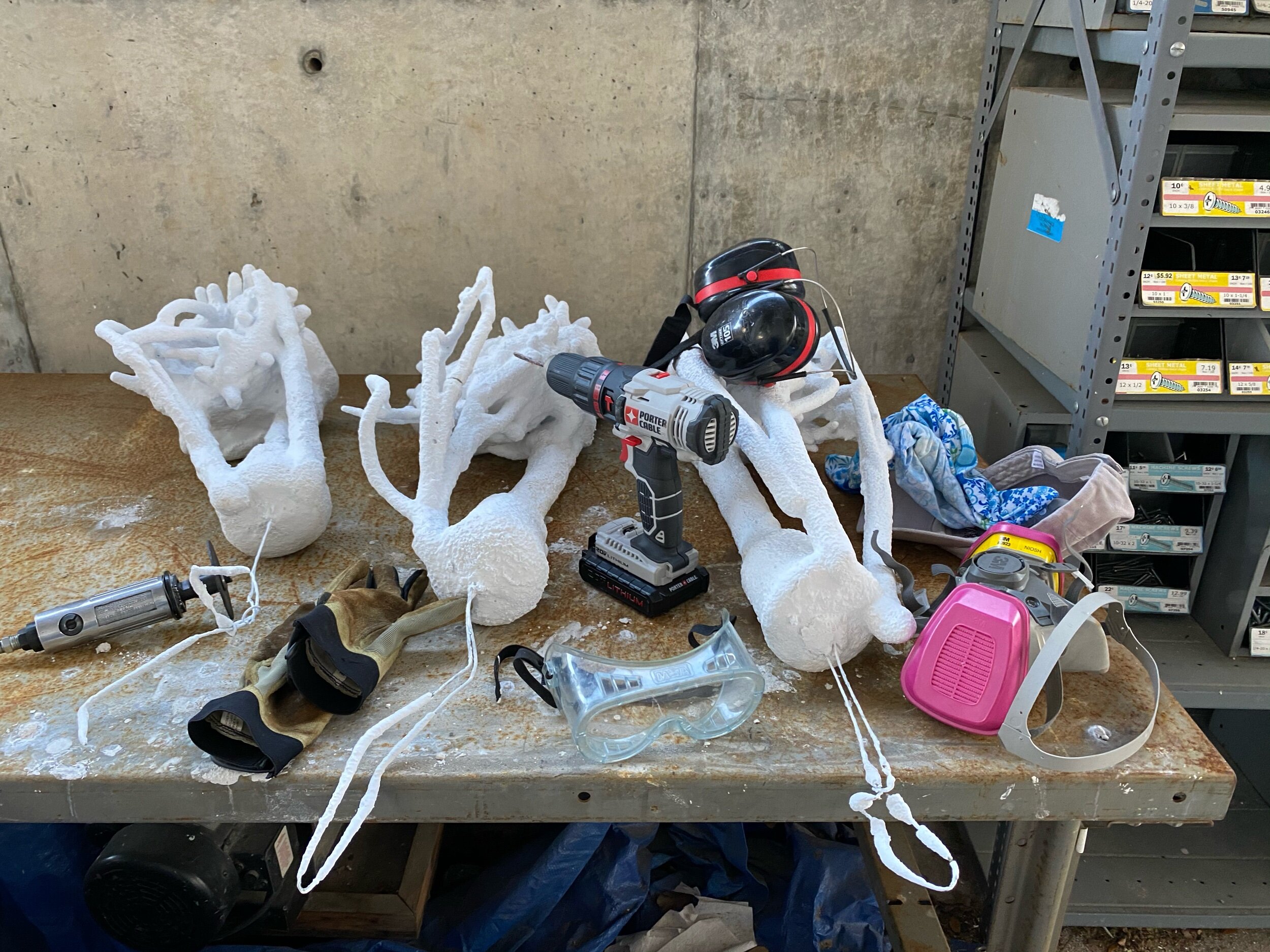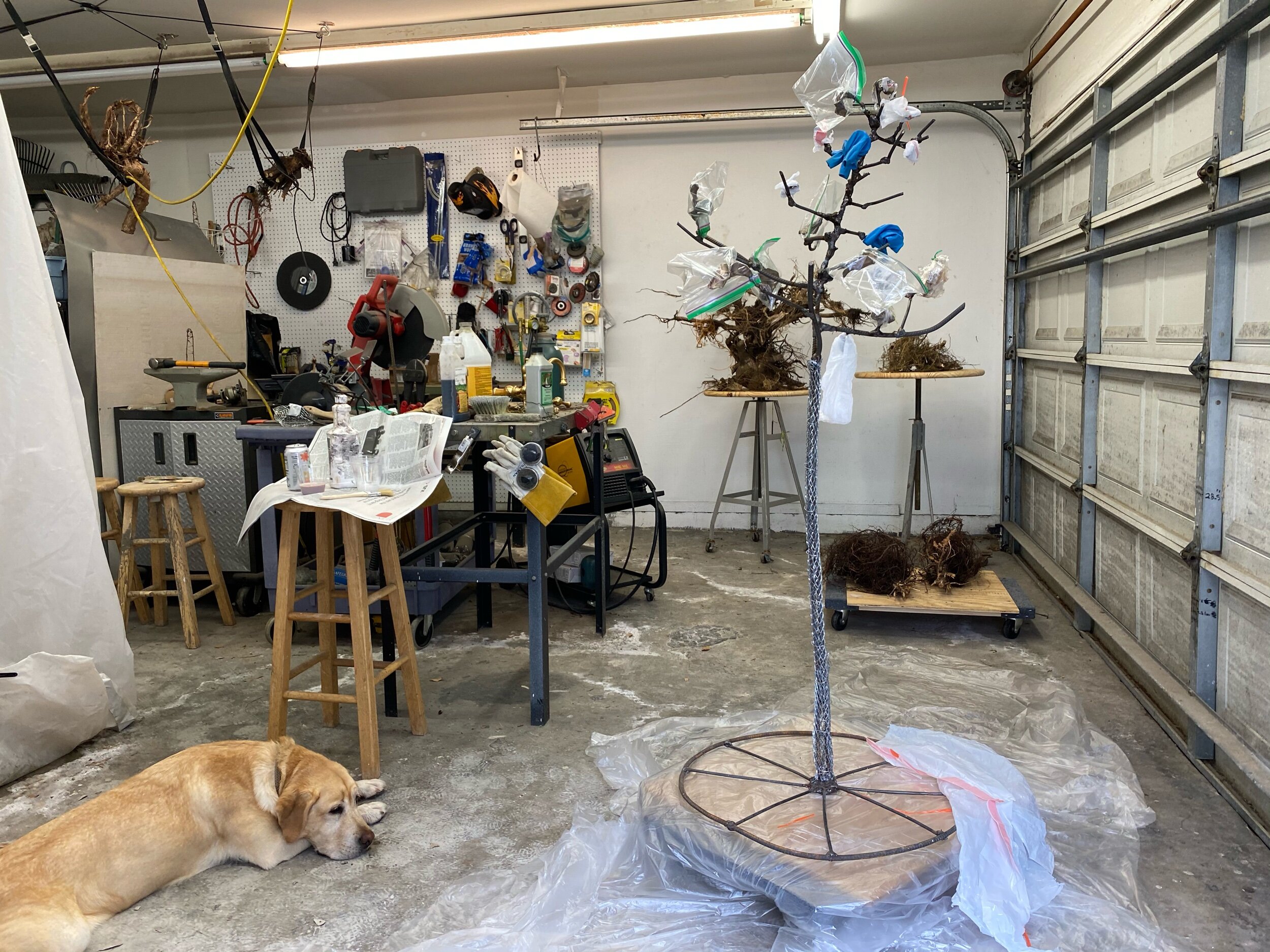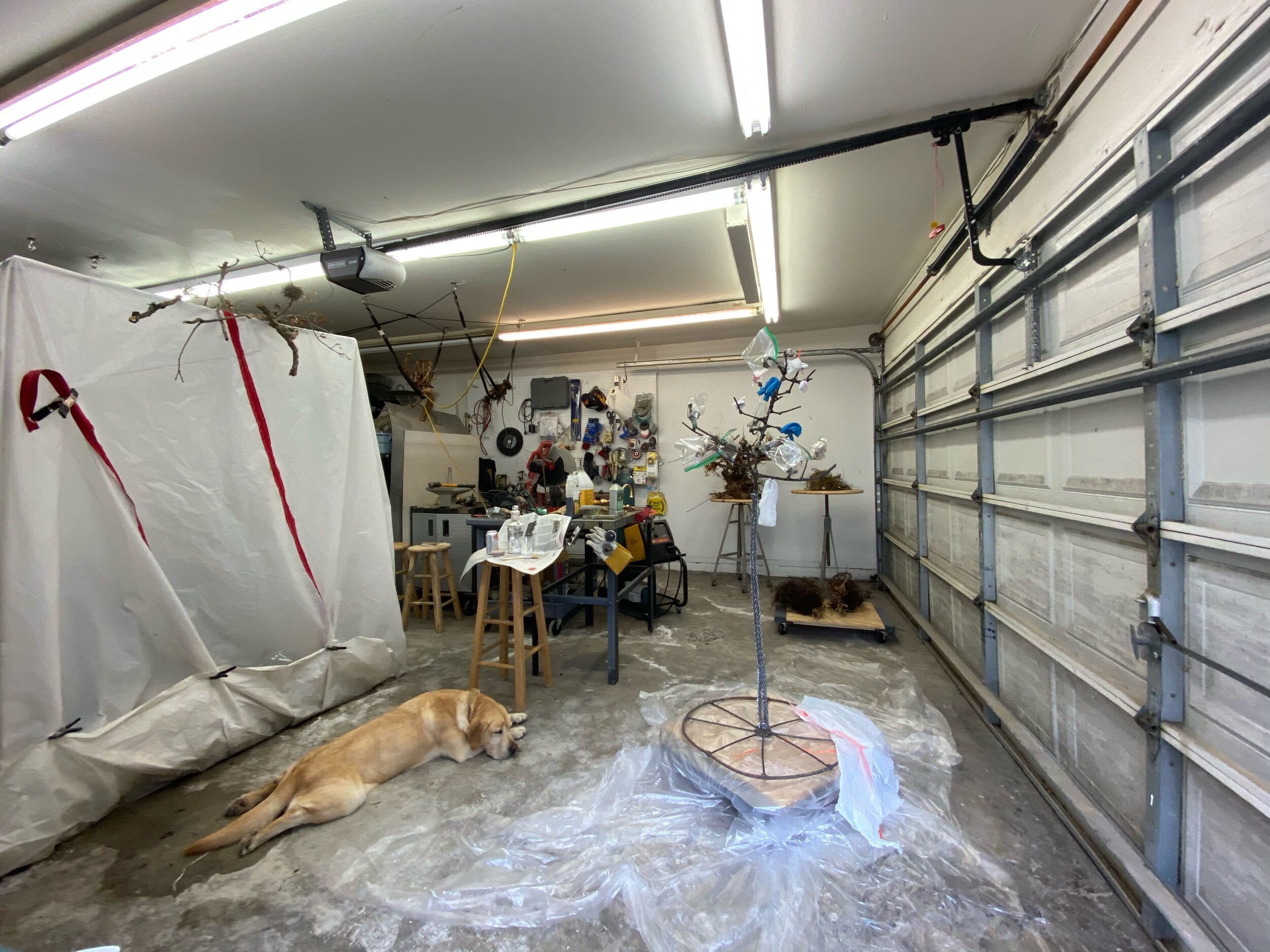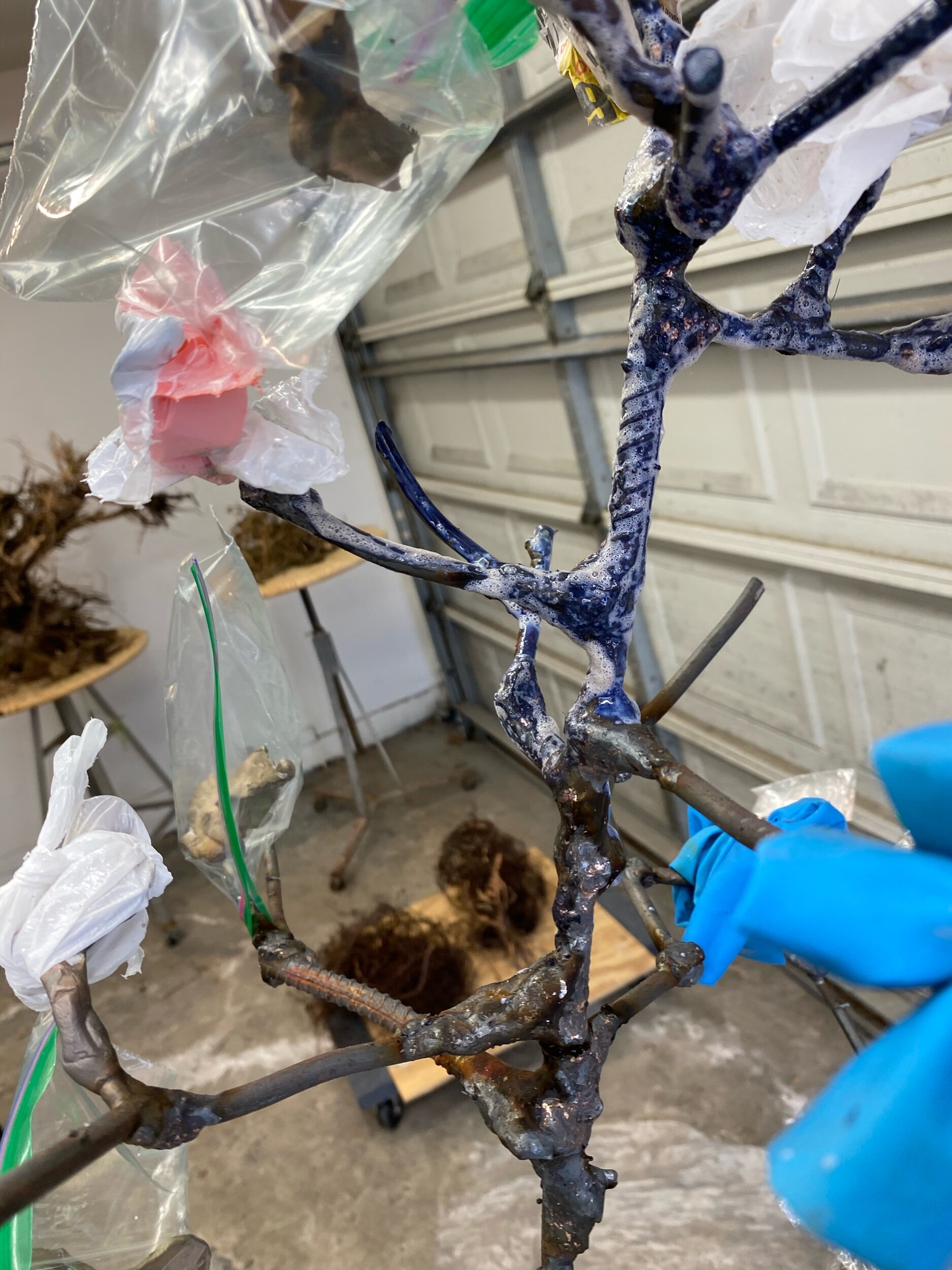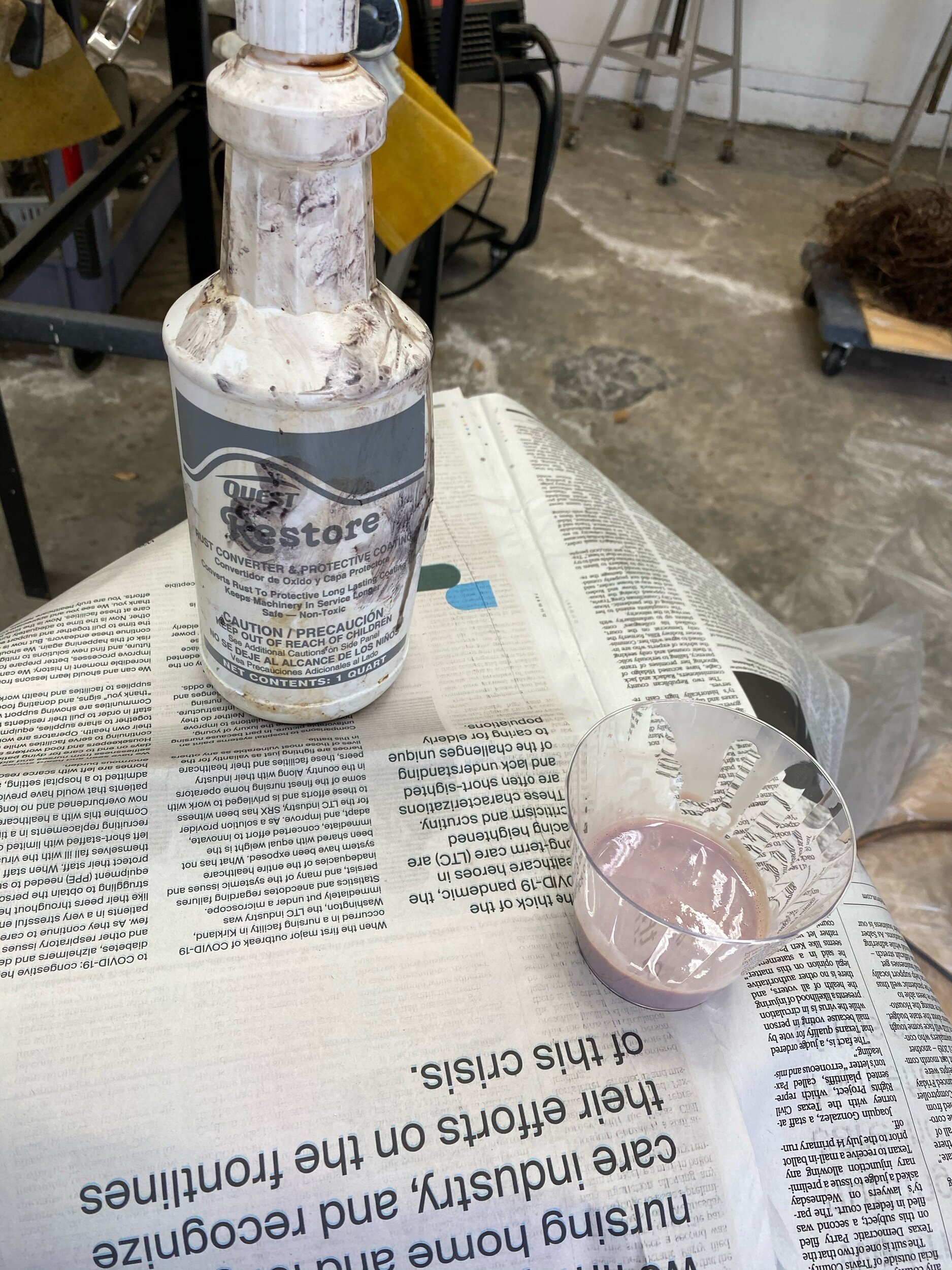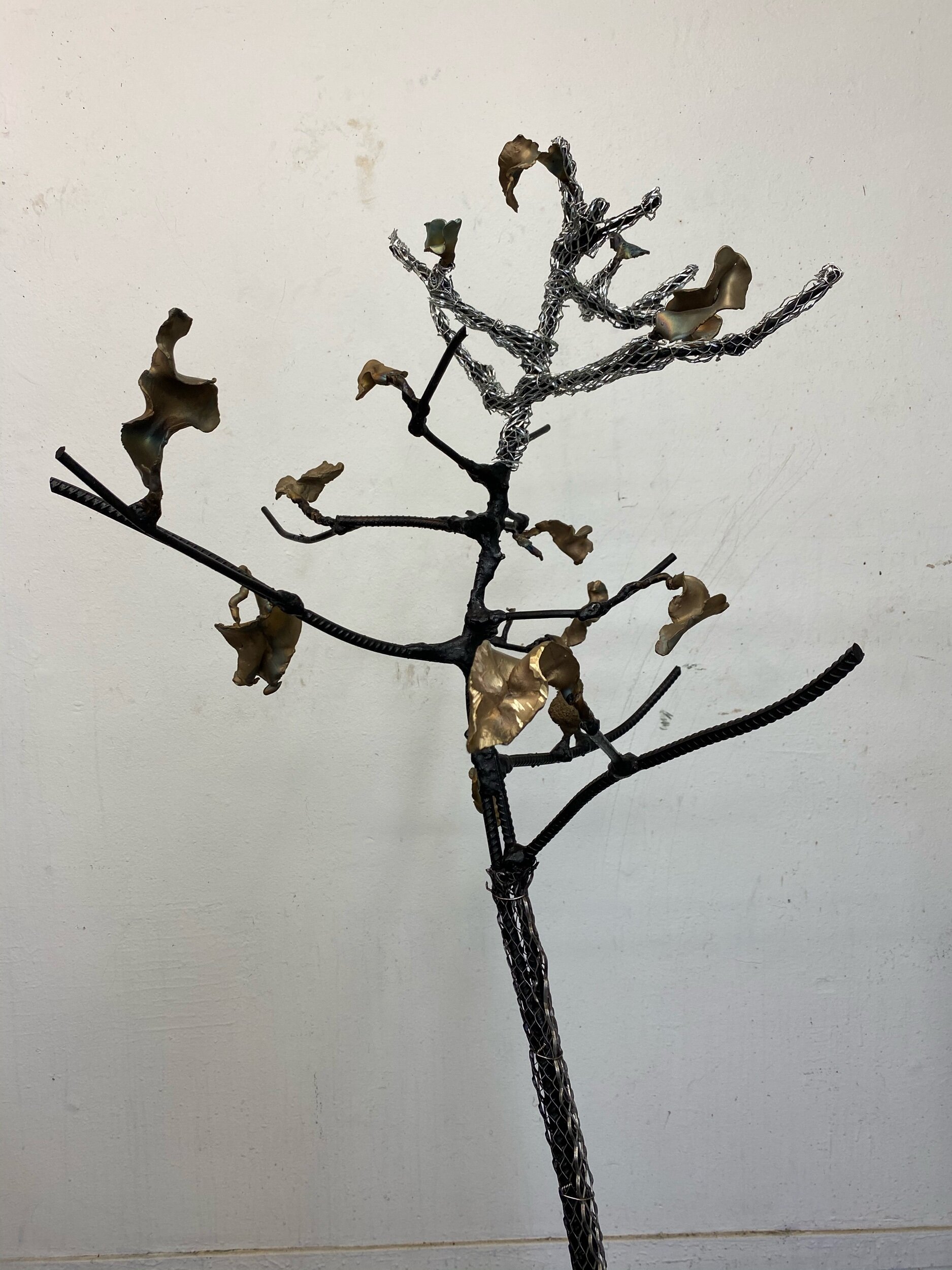Same Time Next Year, is an annual survey of organic found objects preserved in the form of a bird’s nest cast in bronze. I retrieved these objects in a given year. I started making these modern-day fossils in 2013; each piece is a smidgen of a historical record of the natural world found in urban Texas. I include things I pick up gardening, walking my dog, flipping my compost bin, and daily outdoor chores. They are things that find me; I never go out hunting for them however I am always looking. Neighborhoods today are exceptionally manicured to the point of being sterile as opposed to full of life. Mosquito home misting machines and heavy weed control chemical additives keep the insects, birds and available organic matter relatively bland. I am campaigning to change the landscapes of urban settings. One day I hope there will be a greater diversity of found materials.
This year I am playing catch up and created the pieces for years 2017, 2018, 2019, in these pieces, there are bug casings, dried flowers, bug carcasses, twigs, wings, feathers, leaves, seeds a beetle, cicada and a dead bee. In January - March, I coated them in wax, sprued them up, dipped them to make the shell, and did two burnouts at the MFAH Glassell studio school foundry, and then the COVID 19 quarantine kicked in.
The MFAH responsibly closed the school but allowed us to pick up any work. I picked up the shells and took them to Legacy Fine Arts Foundry. They are great people, I have used them on several occasions on projects over the last six years. Their work is phenomenal; they finished burning out the shells and cast them, broke off the shells, cut off the sprues, and sandblasted the nests. I could break off the shells, but I have torn my shoulder twice, breaking off shells. I am so grateful for their help and enjoy working with them. I am excited to have the pieces cast, and I am ready to do the finish work and patina.
Below are the images I took as I worked on the three nests.
Shaping the dried organic matter.
Creating a system to get bronze into the sculpture.
The best with the wax sorue system.
The sprue system after the first dip in slurry.
All three pieces after several dips.
Drying after the last dip to build the shell.
My tools to cut off the top of the cup and blind vents. The wax will drain out if the tuop of the cup. I also drill holes to keep the shell from cracking as the wax expands in the furnace.
After cutting the cup and blind vents.
The pieces at legacy as Victor is breaking off the shells.
The three nests and some small bronze casting to use for studio visit gifts.
Nash Baker is my art photgrapher, Nash lost his photography studio to a fire studio during COVID. I will wait to have these pieces photographed when he is back in operation.


